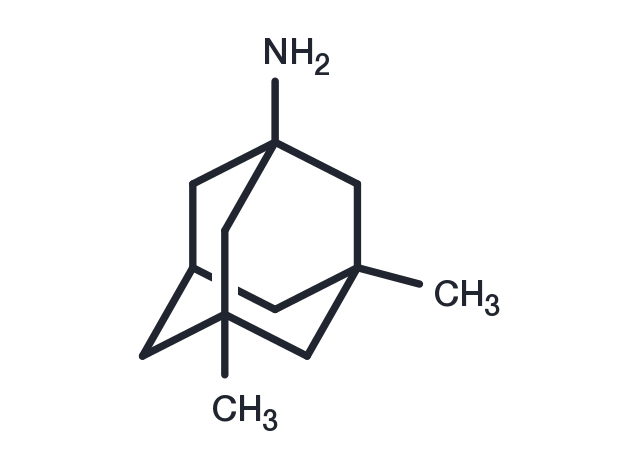Powder: -20°C for 3 years | In solvent: -80°C for 1 year


Memantine, an amantadine derivative with some dopaminergic effects, has been proposed as an antiparkinson agent and has may be used to treat moderate to severe Alzheimer's disease. It acts on the glutamatergic system by blocking NMDA receptors.

| Pack Size | Availability | Price/USD | Quantity |
|---|---|---|---|
| 5 mg | In stock | $ 50.00 | |
| 10 mg | In stock | $ 70.00 | |
| 25 mg | In stock | $ 114.00 | |
| 50 mg | In stock | $ 167.00 | |
| 100 mg | In stock | $ 248.00 | |
| 500 mg | In stock | $ 535.00 |

| Description | Memantine, an amantadine derivative with some dopaminergic effects, has been proposed as an antiparkinson agent and has may be used to treat moderate to severe Alzheimer's disease. It acts on the glutamatergic system by blocking NMDA receptors. |
| Molecular Weight | 179.3 |
| Formula | C12H21N |
| CAS No. | 19982-08-2 |
Powder: -20°C for 3 years | In solvent: -80°C for 1 year
DMSO: 50 mg/mL (278.86 mM)
You can also refer to dose conversion for different animals. More
bottom
Please see Inhibitor Handling Instructions for more frequently ask questions. Topics include: how to prepare stock solutions, how to store products, and cautions on cell-based assays & animal experiments, etc.
Memantine 19982-08-2 Others iGluR LTP Alzheimer's Inhibitor disease inhibit Ionotropic glutamate receptors depressive hippocampal inhibitor
